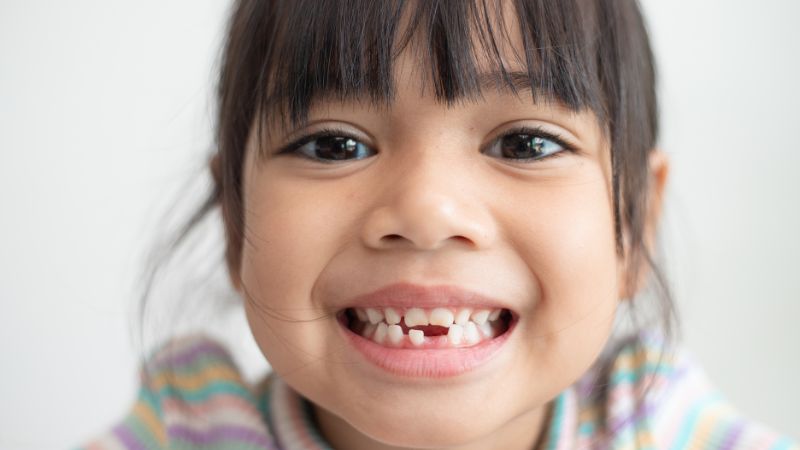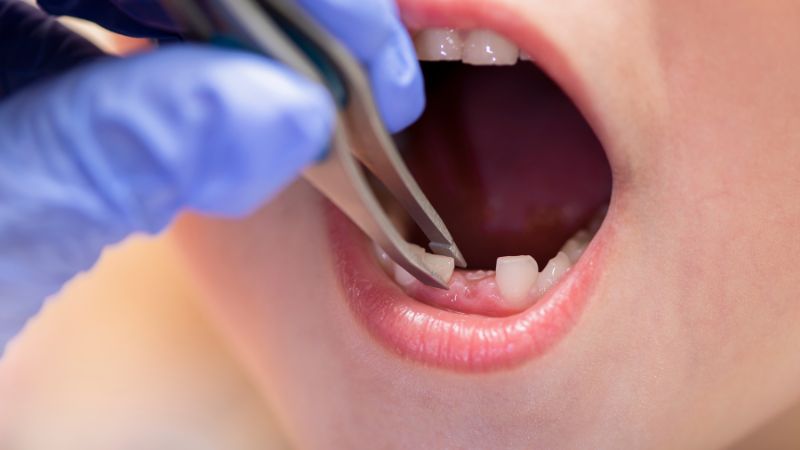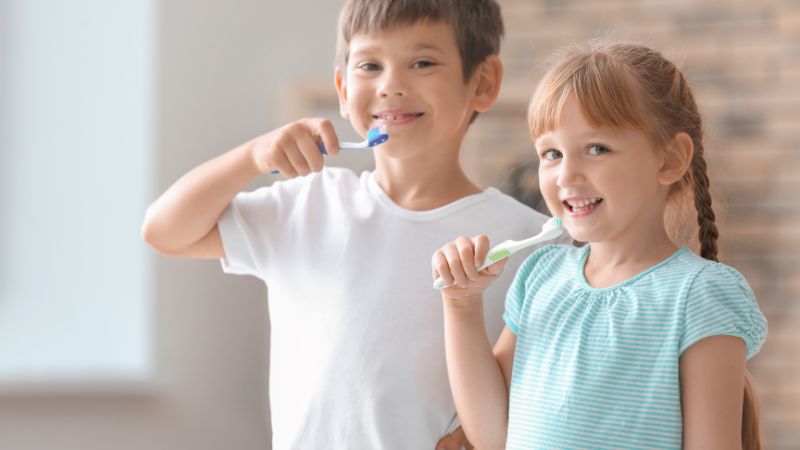Having a set of straight, white, and beautiful teeth is a desire for many people. Therefore, from the time children start losing their baby teeth and their permanent teeth start to grow, parents should take good care of their children’s dental hygiene so that they can have a beautiful set of teeth and be confident about their smile.
1 At What Age Do Children Start Losing Their Baby Teeth?
At what age children start losing their baby teeth is a common question among parents with young kids. Typically, most children will start losing their baby teeth and getting their permanent teeth between the ages of 5 and 6. However, some children may start this process earlier or later, and girls tend to lose their baby teeth earlier than boys.
It’s important for parents to note that baby teeth don’t all come out at once. The two bottom front teeth will usually be the first to become loose and fall out, followed by the two top front teeth, and then the other front teeth on both the top and bottom jaws.
By the time a child is 13 years old, they should have all 28 of their permanent teeth, and then between the ages of 20 and 21, the four wisdom teeth will usually grow in, resulting in a total of 32 teeth.
 Children usually start losing their baby teeth between the ages of 5 and 6
Children usually start losing their baby teeth between the ages of 5 and 6
2 How to Help Your Child Get Straight, Even, and White Teeth During This Transition
Pay Attention to the Order of Tooth Eruption
Parents should be aware of the order in which their child’s permanent teeth are expected to erupt, so they can help manage the process and ensure proper dental care. The process of tooth eruption and replacement can occur as follows:
- 6–7 years old: The two bottom front teeth come out first, followed by the two top front teeth.
- 7–8 years old: The two front side teeth on the top jaw emerge, followed by the two front side teeth on the bottom jaw.
- 9–11 years old: The first molars on the top jaw erupt, followed by the first molars on the bottom jaw.
- 9–12 years old: The bottom canine teeth appear.
- 10–12 years old: The top canine teeth, second molars on the bottom jaw, and second premolars on the top jaw come through.
 Pay attention to the order of tooth eruption
Pay attention to the order of tooth eruption
Monitor the Development of Baby Teeth and Permanent Teeth
By paying close attention to your child’s teeth, you can detect any abnormalities early on and address them more effectively and easily. Potential issues include delayed eruption of permanent teeth, teeth growing in the wrong position or unevenly, and conditions like overbite, underbite, or gaps between teeth. Some children may also have congenital missing teeth or extra teeth.
Pull Baby Teeth at the Right Time
Pulling out baby teeth too early, before they are loose and ready to fall out on their own, can cause permanent teeth to grow in crooked or crowded. On the other hand, pulling teeth too late can result in permanent teeth not having enough space to erupt, leading to overcrowding and an overbite.
 Pull baby teeth at the right time
Pull baby teeth at the right time
Encourage Daily Oral Hygiene
It’s important to instill good oral hygiene habits in children from an early age. Children should brush their teeth twice a day, for at least 2 minutes each time, ideally after breakfast and before bedtime. This will help remove plaque and prevent tooth decay.
Choose the Right Toothbrush and Toothpaste
A good toothbrush for children should have soft, fine bristles and a handle that is comfortable for them to hold. This will ensure effective plaque removal without damaging the enamel or gums. It’s also important to use a fluoridated toothpaste to strengthen the enamel and prevent cavities.
 Choose the right toothbrush and toothpaste
Choose the right toothbrush and toothpaste
Pay Attention to Your Child’s Diet
It’s best to limit your child’s consumption of sugary and starchy foods and drinks, such as candy, cookies, soft drinks, and fruit juices. The bacteria in the mouth feed on these sugars and produce acids that can erode the enamel, leading to tooth decay and discoloration.
Break Bad Oral Habits
Some common bad oral habits that can affect dental health include eating very hot or cold foods, touching baby teeth with fingers or tongue when they are loose, thumb sucking, and tongue thrusting. These habits can introduce bacteria into the mouth, damage the enamel, and affect the alignment of teeth.
 Break bad oral habits
Break bad oral habits
Regular Dental Check-Ups
In addition to good oral hygiene practices at home, it’s important to take your child for regular dental check-ups twice a year during this transition period. This will help ensure that any potential issues are caught early on and that your child’s permanent teeth are growing in straight and healthy. If your child experiences any tooth pain or other dental issues, make an appointment with the dentist as soon as possible.
These are some tips to help your child achieve straight, even, and white teeth during this important transition period. We hope that by following these suggestions, your child will have a beautiful and healthy smile for years to come!
Source: Marrybaby.vn






























